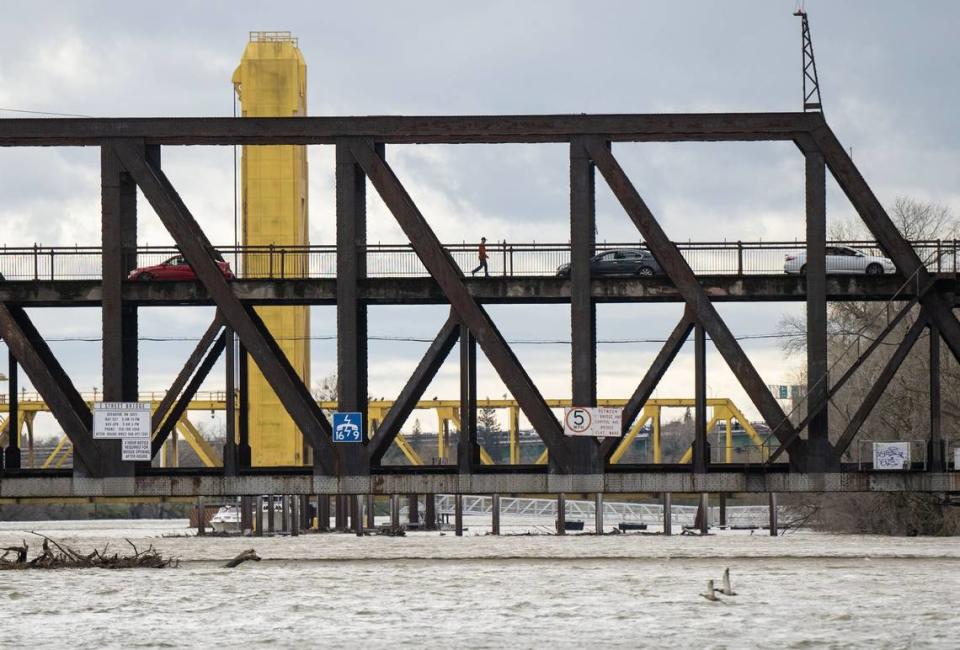When does construction start to replace I Street Bridge in Sacramento? Bee Curious answers
A new bridge is set to revamp Sacramento’s city skyline, with a futuristic design unmatched by the city’s existing overpasses.
It’s been more than a decade since the city decided a new bridge was needed to connect West Sacramento to the Railyards in downtown, replacing the I Street Bridge.
However, residents haven’t seen ground break yet.
“When does construction begin on the new Sacramento River Bridge to the Railyards? (If ever),” a resident asked Bee Curious, a community-driven series where reporters answer questions about the region.
Here’s what we found:
When will construction start on the new I Street Bridge?
Construction on a new bridge connecting West Sacramento and the Railyards is anticipated to begin in 2025, city spokeswoman Gabby Miller said, but it depends on funding.
Currently, the I Street Bridge replacement project is not fully funded, she said, and construction will begin once all financial support is secured.
So far, officials have completed the environmental documentation, Miller said on Monday, and are working through the permits, right-of-way acquisition and final design.
Even after construction starts it’ll be a while before the new bridge graces the city.
“The project will take approximately four years to construct to comply with environmental mitigation and flood control work windows,” Miller said. “If construction begins in 2025, the new bridge would be completed by 2029.”
Why is the city replacing the old I Street Bridge?
The bridge is overdue for a replacement, according to the city.
“The existing I Street Bridge is more than 110 years old; the nine-foot lanes are too narrow to serve buses, there are no bicycle lanes, and the sidewalks are too narrow to meet current accessibility standards,” the city said on its website.
A new bridge will be built upstream from the current one and will cross the Sacramento River, connecting the Railyards to West Sacramento’s Washington neighborhood.
The current bridge will remain and serve as a railroad crossing on the lower deck, the city said, while the upper deck may be used by pedestrians and bicyclists.
What will the new bridge look like?
The city revealed the final rendering of the bridge in February 2020, after spending more than a year designing the overpass.
The new vertical lift bridge will feature 6-foot bike lanes and 12-foot shared paths for pedestrians and bicyclists. It can also withstand more than 25,000 vehicles daily, according to the city’s 2020 news release.
The bridge’s contemporary blueprint is bolstered by two curved green and white pillars on each side, which light up at night.
“This is an exciting step for the city as we move on to the next stage of building the new I Street Bridge,” Mayor Darrell Steinberg said in the release. “This strikingly modern design will make the new bridge an instant landmark and an important piece of redesigned waterfront.”
How much will the I Street Bridge project cost?
The city estimated the total cost of the I Street Bridge replacement project at around $260 million to $320 million as of the summer of 2022.
The project was initially estimated to cost about $200 million in 2020, according to the release.
Officials cited increasing prices for steel and other materials for the rising cost.

Who’s paying for the bridge replacement project?
State, federal and local funding from the cities of West Sacramento and Sacramento will help build the bridge.
The city said it is partnering with Caltrans, as well as using California Highway Bridge Replacement funding and Local Partnership Program funding.
Sacramento is also seeking more financial assistance from the Bridge Investment Program.

